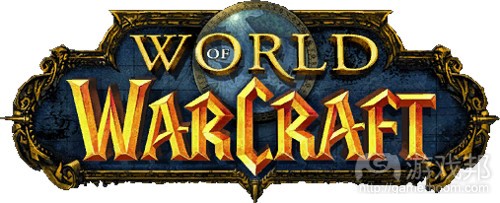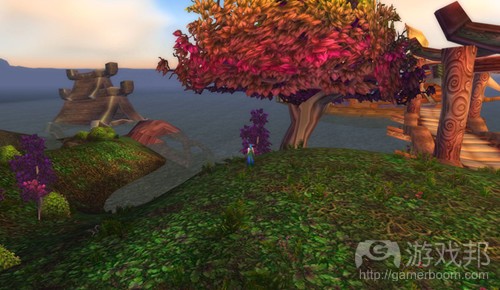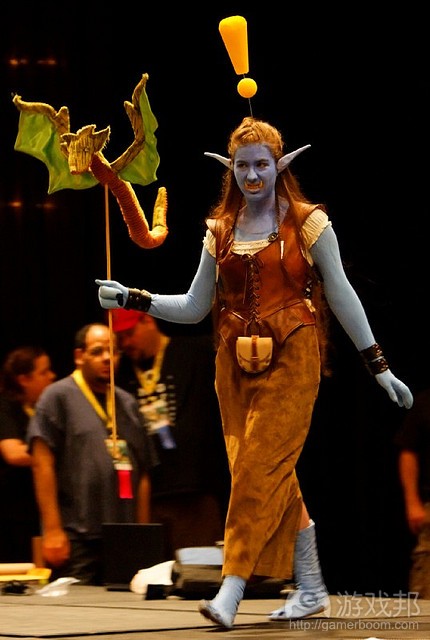《魔兽世界》诞生后的10年发展与影响
作者:Raph Koster
《魔兽世界》已经诞生10年了。这引起了我们的很多想法。
《魔兽世界》是各种矛盾的结合体:并不是先驱,但却巩固了这一模式。并不是实验者,但却得到了回报。并不是创新者,但却是精心设计且具有吸引力的。它是一款将现有的内容变成具有广大吸引力且能够第一时间吸引大量玩家注意力的MMO。
这有可能是虚拟世界历史上最大的游戏设计成就。不管怎么样,我们现在所谈论的是一个已经诞生10年半的游戏框架,它已经经过了数百次迭代与发行。这一类型中从未有过一款游戏达到这样的用户,这样的成就,以及这样的优化程度。
在经过10年半但却未达到预期效果的优化后,暴雪做出了最正确的选择:删除了核心内容,留下了游戏系统中的核心乐趣元素,并确保它们在面向更广泛的市场时具有易用性和吸引力。
比起那些玩过之前游戏但却不知道更深的水源在哪里的玩家,今天有更多人能够轻松地通过Azeroth之门。《魔兽世界》中的大多数本质特征都是源自1990年所开始的传统。《魔兽世界》是DikuMUD模式的(可能是最终的)进化。
Dikus是MUD大家庭中的一个分支,也是最受欢迎的一个。它们定义了MUD游戏玩法的Hack & Slash模式。固定的类,基于关卡的刷任务,带有怪物和任务的明确区域。治疗师,坦克,以魔法师形式呈现的nuker,并且非常强调群组。有种世界持久感;所有的一切总是不断进行重置,重现与重生。用户在一开始是“觉得冒险和角色扮演比黑客更有趣的人”,而之后将引用1991年2月出现在rec.games.mud上的公告。
Diku之所以如此受欢迎便是因为它很简单;Diku游戏中的一切内容都是基于硬编码,这意味着你能够马上创造出一款可行的游戏。所有的内容都是基于严格定义的文本文件—-就像严格的数据库条目,并且不支持脚本或条件式。这意味着与另一个mud交换区域是微不足道的。侵入贫乏的源代码的轻松性意味着许多“代码库”修改后的分布将变得可行:就像Alfa,Copper,Circle,ROM等等都将逐渐推进基本体验的能力。Diku传播就像穿梭于游戏网络中的病毒,并且还出现了“囤积的mud”现象,即你能够登录20款系列游戏并发现自己处于Midgaard的同一个起点中。
对于之后的MMORPG,我们所期待的许多功能都不是源自于Dikus。依赖于Dikus就像在MUSHes或MOOs等基于脚本的环境中的一种苍白模式。LPMuds中编码的灵活性意味着大多数实验都会在之后变成常见的功能—-不管是玩家运行的协作系统还是强大的任务或者程序生成环境,然后它们将整合到比较不灵活的Diku代码库中。
Dikus为许多最早的MMO提供了重要的灵感。《Meridian 59》的团队中便拥有Diku玩家。《无尽任务》也带有Diku游戏玩法,主要是受到经典的《Sojourn》的启发。最初的《网络创世纪》的团队中有一半都是Diku玩家,尽管《网络创世纪》主要利用了LPMud以及MUSH和MOO背景,因此它更像是基于沙盒游戏。
在《魔兽世界》的开发阶段出现了两款大型MMO。《模拟人生在线》出现在《新闻周刊》的封面,并被当成虚拟在线游戏的主流。它拥有大量的预算以及强大的“模拟人生”品牌。还有一款游戏便是我们自己的项目,即《星球大战星系》—-这也是另一个强大的品牌,但是它的开发时间太短并且拥有不多的预算。
这两款游戏都呈现出了混乱,漏洞重重,艰难且乏味的游戏玩法。它们都具有创造性。但这并没有多重要:因为世界主宰即将到来。
《魔兽世界》经过了很长一段时间的开发,并且与上述两款游戏不同的是,它直接吸取了来自《无尽任务》的灵感。《无尽任务》作为Diku类型游戏玩法的典型代表始终都强调着群组战斗。在游戏最后,“Raids”的成员资格主要是由在线协作的表现所决定。
比起尝试创造新功能,《魔兽世界》尝试着去吸取各种游戏的优秀内容,并且始终专注于游戏乐趣。当其它游戏都在追逐着高端图像时,它们选择瞄准于技术要求,努力开启潜在的玩家基础,同时依赖于最初被批评太过卡通画的艺术指导,因为这些内容非常生动且具有吸引力,并且在某种程度上能够突显游戏。
《魔兽世界》的确拥有许多其它游戏已经创造出来的核心功能,并且通过巧妙的结合与优化将其变得更加出色。
在暴雪的改造中,raids变成等待解决的复杂谜题,就像教授一支团队一系列复杂的舞蹈步骤一样;其设计理念是来自2d子弹射击游戏中的boss阶段。考虑到《无尽任务》中的raider对《魔兽世界》设计团队的影响,raids自然成为了推动《魔兽世界》向前发展的引擎般的存在。
《魔兽世界》中还使用了早前文本mud时期所出现的一种工具—-实例化,不过他们的使用方法是早前MMO设计师不愿尝试的。我们可以将其当成一款打破世俗的游戏,那时候我还有许多设计师都在与在实例中创造太多地牢的做法进行对抗,认为满足其他玩家的不可预测性才是这类型游戏的核心。但是复杂的raid模式却不能挽留这种不可预测性,所以《魔兽世界》便创造了明显的邂逅,让人觉得这更像是嵌入式游戏,或者其本身就是挑战。这会减少内部团队间的接触,但却能够强化团队间的联系,因为团队将经历训练过程。
《Dark Age of Camelot》的区域间战斗便非常适合《魔兽世界》的主题:在许多mud中,PvP系统其实是个变量,当然了这在《网络创世纪》中非常有效。在今天,我们似乎忘记了玩家对抗玩家战斗的争议性以及这是一个难以解决的设计问题。然而《魔兽世界》却是一款基本的PvP MMO,并且努力让玩家觉得这是一个安全的领域。
在《星球大战星系》中,对话框系统是一个主要的设计挑战(游戏邦注:2d游戏便经常使用对话框,如《Habitat》和《The Realm》);《魔兽世界》便巧妙地使用了这一功能并在测试阶段重新调整了摄像机系统,最终结果与《星球大战星系》非常相似。
帮助许多早前游戏获得了大量用户粘性的宠物系统消失了。不要在意像城镇和政策这类型内容。锻造系统从原先在《星球大战星系》或《模拟人生在线》中的状态往后退了几步,并回到了在《无尽任务》中的状态。甚至是我们在《星球大战星系》中看到的角色定制系统也消失了。在《魔兽世界》中,早前的游戏便是一些明显的复制内容的集合。这个吸取了来自许多团队的技术努力的无缝世界被映射出比解决动态平衡更简单的用户实例的早旧区域所取代了。
这些都不能取代游戏团队的努力;即选择适当的功能将《魔兽世界》变成是最复杂的内容的努力。借着较短的游戏过程,更高的易用性以及更简单的准入等名义,《魔兽世界》删掉了任何“世界般的”功能,而始终倾向于游戏。
《魔兽世界》的真正创造性不是源自多变的MMO历史,而是AAA级游戏中不断发展的设计趋势,即终结了第一人称射击游戏而带来了任务导向型游戏。
紧随着《半条命》的FPS不断朝着今天伴随着生动的行动的电影叙述镜头发展;暴雪便在《魔兽世界3》中成功创造了电影般的场景。然而,MMO仍然是一些无目的的内容,总是在努力传达一个连贯的教程体验。尽管拥有这样的名字,但是《无尽任务》却不只是关于打斗故事,游戏中的任务其实是每个玩家寻求点数的各自任务。甚至在暴雪自己的RPG中,如《暗黑破坏神》系列,我们便看到了MMO般的“轴辐式”设计,即总是会将玩家带回中心城镇。
在《魔兽世界》中,尽管带有“世界”这个字眼,我们却看到了线性取代了早前游戏中散放的假设。然而像《无尽任务2》和《星球大战星系》等游戏都非常重视路径系统,因为它是一种非常强大的社交和易用性工具,但是《魔兽世界》却并未这么做,因为游戏从未让玩家走很长一段路—-玩家的下一个目标总是能在他们的视线范围内。很少能在MMO中(如《Asheron’s Call 2》中)看到的角色头上漂浮着的辅助符号在这里却是无处不在。
尽管是基于熟悉的杀死怪物形式进行创造,但这些任务仍然是随处可见的。为了让玩家深入游戏,其中很多有趣的任务都是参考《魔兽争霸》进行创造。而对于休闲玩家,《魔兽世界》其实就是一系列引导着你沿着道路前进的体验,并且这条道路上布满了阻碍,让你能够不断从NPC头上追随下一个发光的标记。
这彻底终结了早前的MMO模式,即关于狩猎与采集,并且会被临时的任务所中断。在《魔兽世界》中,分级的游戏玩法反而更侧重任务,并伴随着临时的狩猎与采集。每个区域及其相关任务是设计师精心设计的,并伴随着任务链条将引导着你穿越不断提升难度的区域,当你到达某个点能够进入下一个级别时将你带到一个全新区域。只有带有较高的预算才能做到这点;的确,《魔兽世界》的预算是以前Diku游戏的3,4倍。但这的确是非常强大的改变。
沙盒玩家认为这是巨大的倒退。实际上,游戏中几乎不存在任何开放空间;所有一切都是紧密挨在一起的。这里并不存在早前MMO中相互依赖的系统。但是那些尝试着单人游戏的玩家们最终发现虚拟世界是简单的,他们也能够“一起单独游戏。”结合了暴雪的实力以及《魔兽世界》品牌,《魔兽世界》在第一周便吸引了比西方MMO市场更多的玩家。
从某种程度上来看这是对于这一游戏设计的神化。今天,这一影响无处不在。成为一款MMO意味着成为像《魔兽世界》这样的游戏。即基于受任务驱动的前进方向。这是经过考验证明的战斗机制和raid。界面是已经确定好的,就像PC上的FPS是基于WASD方向键一样。如今的《魔兽世界》成为了所有想要大受欢迎的游戏的模板和标准。
但是对于大多数游戏来说,这并不是一个可轻易达到的标准。几乎没有一款西方MMO拥有能够与之相匹敌的预算,当然了在今天,你需要比较的是带有10年扩展价值以及额外内容与修改的《魔兽世界》。渐渐的,一些被遗漏的功能回到了游戏中—-今天《魔兽世界》的经典系统变成了更加灵活的分类与技能相结合的系统,并呈现出了丰富的个人表达。考虑到时间,游戏经济需要体现出沙盒游戏的一些特征,但是不能太多,如此才能保持核心不变。
曾被我和其他人称为“市场上最不具社交性的MMO”的游戏现在成为了数百万人的虚拟之家,并且持续创造出能够吸引我们不断回到游戏中的优秀的用户体验。它是这类型游戏的“国王”,并且可能永远都不会被其它游戏所取代。可能只有出现巨大的内容传递变化,如近乎无限的云端服务器或虚拟现实呈现等(能够创造出完全不同的体验),我们才有可能看到真正的改革。
任何竞争者进入同一空间都有可能窒息,因为《魔兽世界》几乎占据了该空间中的所有氧气。虚拟设计实验开始干涸,其它游戏只能缩减自己的野心去抓紧《魔兽世界》设计的边缘处。就像从管子中挤出牙膏一样,沙盒游戏的设计最终在其它地方发现了自己的可用武之处。它们的后代被当成不同类型的基础,不管是Facebook的农场游戏还是《僵尸末日》这类型的生存游戏,以及MUD传统的真正继承者:《我的世界》,其虚拟世界是基于模拟与创造,用户能够运行自己的世界和脚本并创造冒险挑战。
只是没有人会再称它们为MMO。这个名字被《魔兽世界》所取代,而那些类似的游戏将努力去推翻它。《魔兽世界》的影响在于它能够定义它所精炼的类型。这是史上最棒的Diku游戏,最棒的战斗MMO,任何在它之后出现并且与之想象的内容都会被拿来与它相比较。《魔兽世界》让MMO变得完美,于此同时,它也彻底将其消灭了。
(本文为游戏邦/gamerboom.com编译,拒绝任何不保留版权的转功,如需转载请联系:游戏邦)
Ten Years of World of Warcraft
by Raph Koster
Ten years of World of Warcraft. Well. So many thoughts.
WoW has always been a contradiction of sorts: not the pioneer, but the one that solidified the pattern. Not the experimenter, but the one that reaped the rewards. Not the innovator, but the one that was well-designed, built solidly, and made appealing. It was the MMO that took what has always been there, and delivered it in a package that was truly broadly appealing, enough so to capture the larger gamer audience for the first time.
Don’t get me wrong; that’s not a knock on it. If anything, it’s possibly the biggest game design achievement in all of virtual world history. After all, we’re talking about taking a game skeleton that was at that point already almost a decade and a half old, one which had literally had hundreds of iterations, hundreds of games launched. None of them ever reached that sort of audience, that sort of milestone, that sort of polish level.
After a decade and a half of refinements that didn’t do the trick, Blizzard came along and did what it does best: cut to the essence, capture the core fun elements in a game system, and make them accessible and appealing to the broadest possible market.
These days, so many more people have passed through the gates of Azeroth than ever played its antecedents that many don’t even know the deep wellspring sources from which it came. Most of the defining characteristics of WoW are from a long tradition that started around 1990. WoW represents the (perhaps final) evolution of the DikuMUD model.
Dikus are one of many branches off the MUD family tree, and one of the most popular. They defined the pure hack n slash model of MUD gameplay for many. Fixed classes, a level-based grind, clearly defined zones with monster farming and (eventually) quests. A healer, a tank, a nuker in the form of a magic-user, with a heavy emphasis on grouping. Little sense of world persistence; everything always resetting, repopping, respawning. Its audience, from the get-go, was “the kind of people who find adventuring and role-playing more fun than hacking,” to quote the announcement post that appeared on rec.games.mud in February of 1991.
Diku proved popular because of its simplicity: everything in a Diku game was hardcoded, which meant you got a working game out of the box. All content was in rigidly defined text files – almost like rigid database entries, with no support for scripts or conditionals. This meant swapping zones with another mud was generally trivial. The ease of hacking the barebones source code meant that a number of “codebases” or modified distributions became available: Alfa, Copper, Circle, ROM, and so on, each slowly advancing the capabilities of the basic experience. Diku spread like a virus across the gaming Internet, and the phenomenon of the “stock mud” was born, where you could log into twenty successive games and find yourself in the same starting rooms of Midgaard.
Many of the features we have come to expect from later MMORPGs didn’t originate from Dikus, it’s true. Housing in Dikus was a pale version of what was truly freeform in scriptable environments like MUSHes or MOOs. The flexibility of coding in LPMuds meant that most of the experiments that later became common features – from player-run guild systems to robust quests to procedurally generated environments – were first seen there, and then adapted into the far less flexible Diku codebases.
Dikus provided core inspiration to many of the earliest MMOs. Meridian 59 had its Diku players on the team. EverQuest was basically a love letter to Diku gameplay, inspired as it was very directly by the classic Sojourn MUD. Half of the original Ultima Online team was Diku players, though UO drew heavily from LPMud and even MUSH and MOO background, and therefore set off in its own, more sandboxy direction.
At the time that WoW was in development, there were two big MMOs launching. The Sims Online was featured on the front cover of Newsweek, and tipped to be the game that could take virtual online play mainstream. It had an enormous budget, and of course the power of the Sims brand. The other was my own project, Star Wars Galaxies – another powerful brand, but also far too short a development time and a quarter of the budget.
Both launched buggy, messy, rough, criticized for tedious gameplay. Both offered many innovations. But it didn’t matter: the juggernaut was coming.
WoW had been in development for a very long time, and unlike those other two titles, it was very much directly drawing its inspiration from EverQuest. EQ, the reigning king of Diku-style gameplay, was always resolutely about group combat. At the high end of play, membership in “raids” (which at the time simply meant “big fights against tough monsters”) was the online teamwork game par excellence.
Rather than try to break new ground on features, WoW set out to instead collate the very best from every game it could, with a relentless focus on the fun. Where other games were chasing high-end graphics, they chose instead to aim low on technical requirements, opening up the potential playerbase considerably, while relying on stunning art direction that was initially decried as cartoony, but which was vivid and colorful and appealing in a way that the grittier other games were not.
And WoW indeed took many of the core features that other games had established, and by and large made them better through the alchemy of recombination and polish.
In Blizzard’s hands, raids became intricate puzzles to be solved, almost like teaching a large group a complex series of dance steps; a design idea drawn, perhaps, from boss stages in 2d bullet hell shooters. Given the influence that EQ raiders had on the WoW design team, it’s no surprise that to this day, raids are the engine driving WoW forward in so many ways.
A related tool, instancing, had been invented clear back in the text mud days, but in WoW we saw it used to a degree that earlier MMO designers were reluctant to embrace. Seeing it as disruptive of the “worldness” of the game, myself and many other designers at the time pushed back against making too many dungeons into instances, arguing that the serendipity of meeting other players was core to the genre. But intricate raid patterns set up as patterns to solve can’t survive that sort of unpredictability, so WoW used instancing liberally, making high end encounters feel ever more like embedded games or challenges in their own right. This had the interesting effect of reducing inter-guild contact, but strengthening the bonds within guilds as teams had to go through training regimens and practice sessions.
The realm versus realm combat that lay at the core of Dark Age of Camelot fit perfectly atop the Warcraft mythos; the underlying PvP flagging system was a variation on flagging systems explored in many muds, and of course famously and endlessly in Ultima Online. We forget, now, how contentious player-vs-player combat was, in those days, and how hard a design problem it was to make it feel seamless. It had been decided that the days of the PvP MMO were basically over, and yet WoW launched with what was basically a PvP MMO and managed to make it feel like a safe space for players.
The chat bubble system had been a massive design challenge on Star Wars Galaxies (chat bubbles had been used in 2d games, such as Habitat and The Realm, and There.com had done some extremely interesting stuff with them which I happily stole, but most MMO designers, alas didn’t play There); WoW cheerfully leveraged that work, as well as redoing their camera system during the beta to be surprisingly similar to SWG’s.
Among the things left by the wayside were features that were proven. Gone were the richer pet systems that had driven so much engagement from players in earlier games. Player housing, past and future source of endless devotion (and revenue) in other games, absent. Never mind stuff like towns and politics and the like. Crafting took massive steps backwards from the heights it had been developed into in Galaxies or even Sims Online, and went back to being more like that in EverQuest. Even the robust character customization that we slaved over in Galaxies, a system which today is in every RPG on earth (but which, I cheerfully admit, we also mostly nicked ourselves, from There.com) was gone. In WoW, you basically looked how you looked, and early on the game was a sea of identical clones. The seamless world, which occupied so much technical effort from so many teams, was simply replaced with by-then-old-fashioned zones with network mirroring on the boundaries: a much simpler use-case than solving dynamic load balancing.
None of this is to minimize the effort this took; the work of selecting the right features to make World of Warcraft was precisely the hardest work there was. In the name of shorter sessions, greater accessibility, and easier entry, WoW cut away any “world-like” features in favor of Game, Game, Game.
In their place was one overriding feature, a true innovation that WoW lifted not from the rich and varied history of MMOs, but from the rising design tide in AAA games that was even then up-ending the first-person shooter: the quest-led game.
FPSes in the wake of Half-Life were moving towards today’s world of cinematic narratives intercut with vivid action; Blizzard had successfully made the cinematic campaign a centerpiece of its RTSes such as Warcraft 3. MMOs, however, were still fairly aimless affairs, always struggling with delivering even a coherent tutorial experience. Despite the name, EverQuest was far more about the fighting than stories – the questing in the title was really each player’s own quest for experience points. Even in Blizzard’s own RPGs, the Diablo series, we saw an MMO-like “hub-and-spoke” design, always pulling players back to one central town.
In WoW, despite the word “World” in the title, we saw linearity displace the free-roaming assumptions of the earlier games. Whereas games like Everquest 2 and Galaxies had invested heavily in waypoint systems that had proven to be powerful social and accessibility tools, WoW left this feature out because the game simply never had you travel a long way – the next goal was generally always within line of sight. Helpful symbols floating above characters’ heads, which had barely been seen in MMOs such as Asheron’s Call 2 (they originated in Blizzard’s own Diablo 2), were everywhere.
And the quests, while still built on top of familiar fetch or kill-n-monsters tropes, were also everywhere. A heretofore unthinkable density, much of it deeply humorous and rich with references to Warcraft lore for those who were willing to dig in. For the casual player, the experience of WoW was literally a series of quest completions designed to lead you along a pathway that had been carefully planned to constrain you, keep you always seeking the next glowy mark over an NPCs head.
This completely up-ended the old MMO pattern, which was more about hunting and gathering, interrupted with occasional quests. In WoW, leveling gameplay was instead about questing, with occasional hunting and gathering. Zones and their quests were crafted hand-in-hand, with the quest chains perfectly designed to lead you across the zone as it increased in difficulty, and birth you out into new zones just as you should reach the point of advancing to the next set of levels. It could only be done with an extravagant budget; indeed, WoW outspent all previous Diku games by a multiple of three or four. But it was incredibly powerful.
Sandboxy players found this to be a massive step backwards. In effect, there was hardly any open space; everything was dense, close together. The rich interdependence systems that were carefully crafted in earlier MMOs were absent. But players who had cut their teeth on single-player games had finally found a virtual world that was accessible to them, where they could “play alone together.” Paired with the power of Blizzard and the Warcraft brand, we watched WoW pick up more players in the first week than the entirety of the Western MMO market combined.
In some ways it was the apotheosis of this game design. Today, the influence is everywhere. To be an MMO has come to mean to be like World of Warcraft. The quest-driven advancement path. The tried and true combat mechanic and the raids. The interface must now conform, much as how FPSes on PC were forever condemned to WASD based on the popularity of specific games. WoW is now the template and the bar that everything must hit.
It’s not a hittable bar, for most. Almost no Western MMOs have ever been granted a comparable budget again, and of course these days, you have to actually compete with ten years’ worth of WoW expansions and additional content and refinements. Slowly, some of those omitted features have crept back in – WoW’s class system is today a much more flexible hybrid class-and-skill system that offers ample personal expression. Given time, the game economy re-acquired some of the characteristics of the sandboxy games – but not too much, in order to retain the focus.
And the game that was once called, by me and many others, “the least social MMO on the market,” is now the virtual home away from home for millions, as network effects, familiarity, and its ongoing dedication to a great user experience above all makes it makes the place we always return to. It is the genre king, and likely will never be toppled by a game like it, as long as investment in it continues. We likely will not see true reinvention come to the space until there are massive changes in content delivery, such as near-unlimited cloud server power, or virtual reality displays, that both permit and force truly different experiences to be created.
The space it entered as a competitor is largely “dead” in the sense that WoW takes up all the oxygen in the room. Experiments in virtual world design began to dry up, to curtail their ambitions to being nibbles around the edge of WoW’s design. Like toothpaste squeezed out of a tube, the design qualities of sandbox games ended up finding their expression elsewhere, to great success. Their children served as the basis of genres, from Facebook farming games to DayZ-style survival games to the true heir of the MUD tradition: Minecraft, a virtual world based on simulation and crafting, where users run their own worlds and script and build adventures and are basically questless.
It’s just that no one calls them MMOs anymore. That title is reserved for World of Warcraft, and those largely similar games that strive to topple it from its seat. Its influence is such that it now defines the genre it refined. It is the best Diku ever made; the best combat MMO ever made; the thing to which everything like it will ever after be compared. World of Warcraft effectively made MMOs perfect, and in the process, it killed them.(source:gamasutra)










































 闽公网安备35020302001549号
闽公网安备35020302001549号